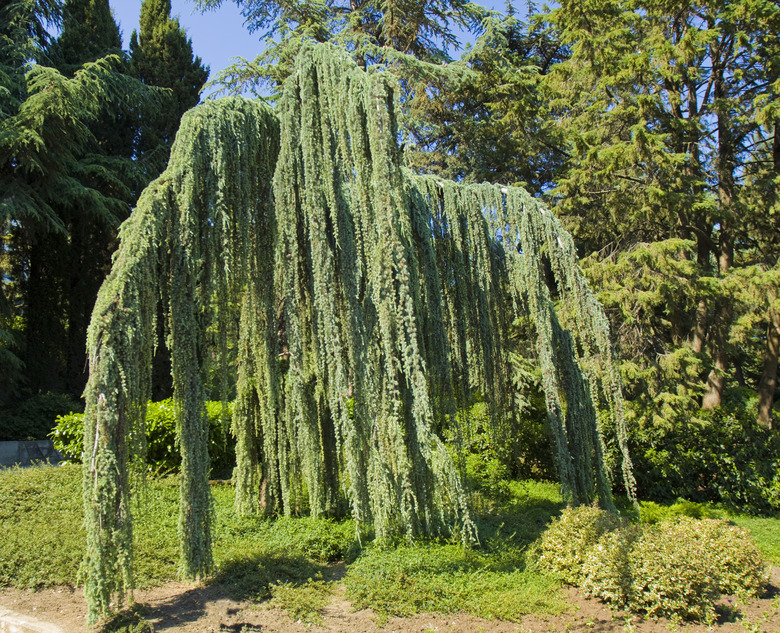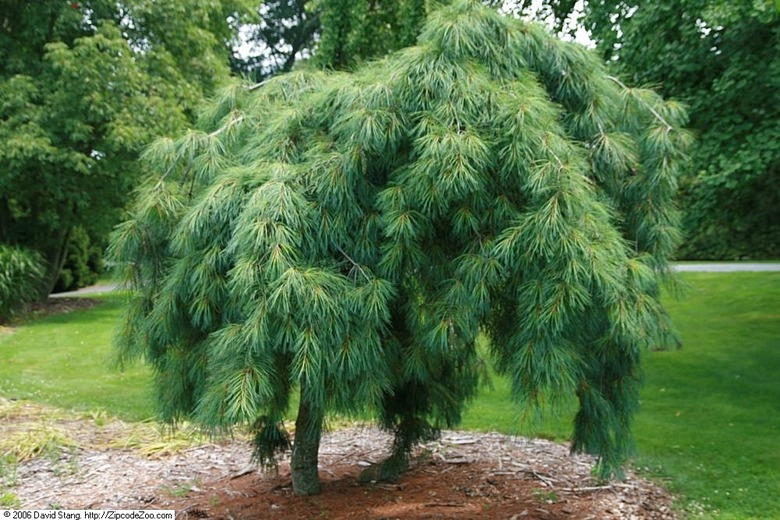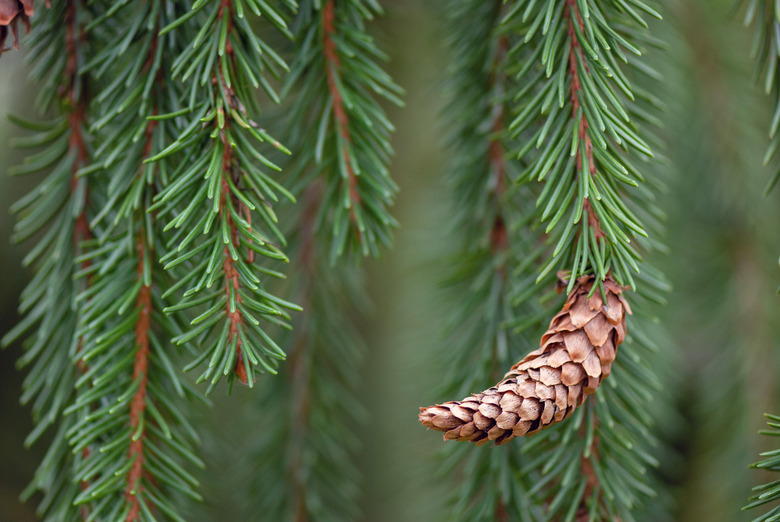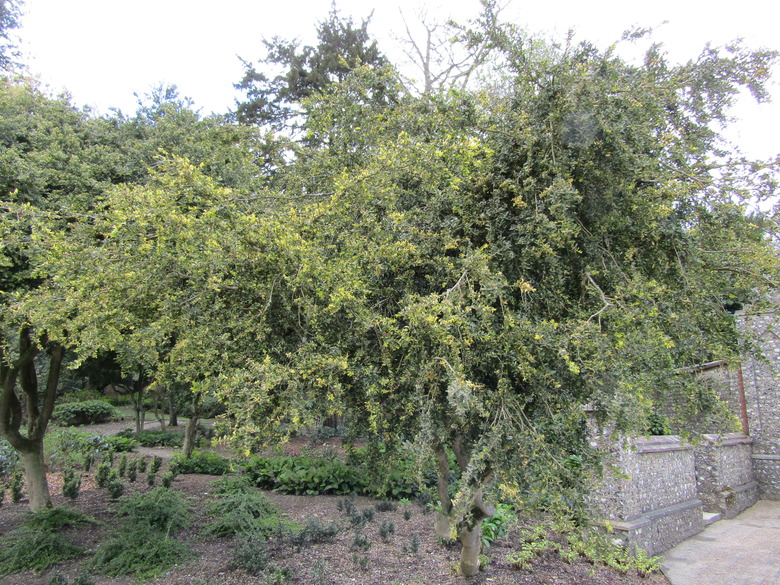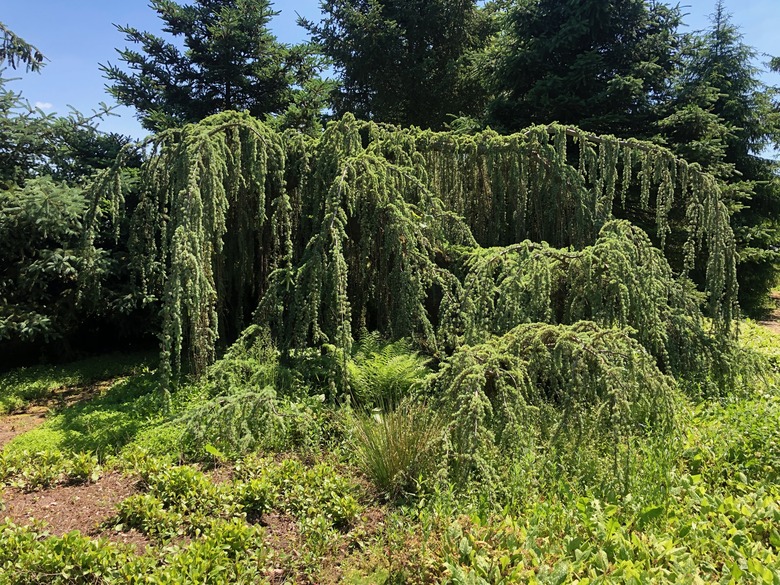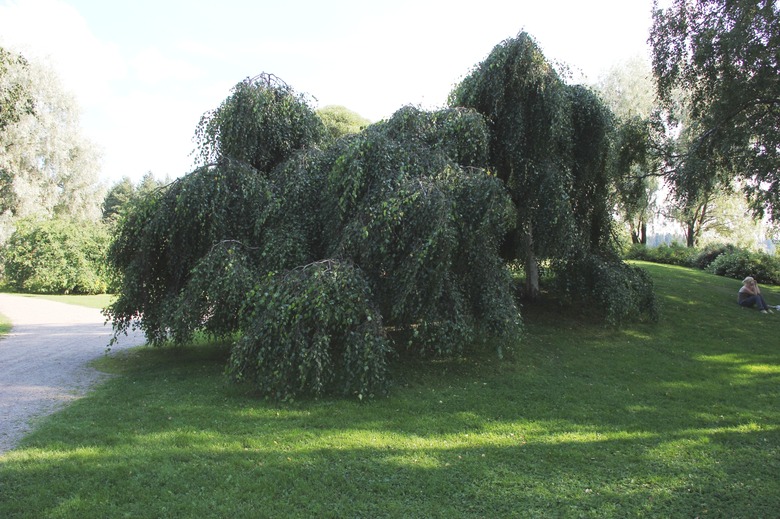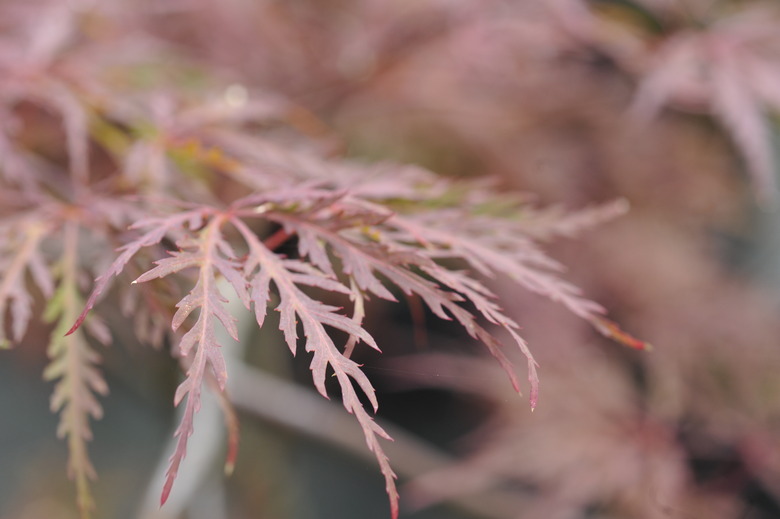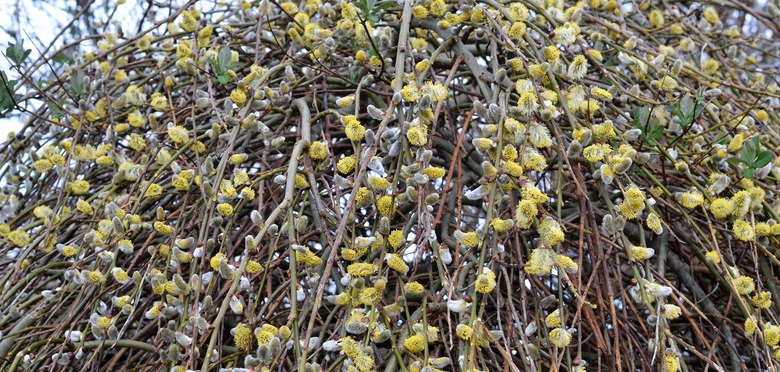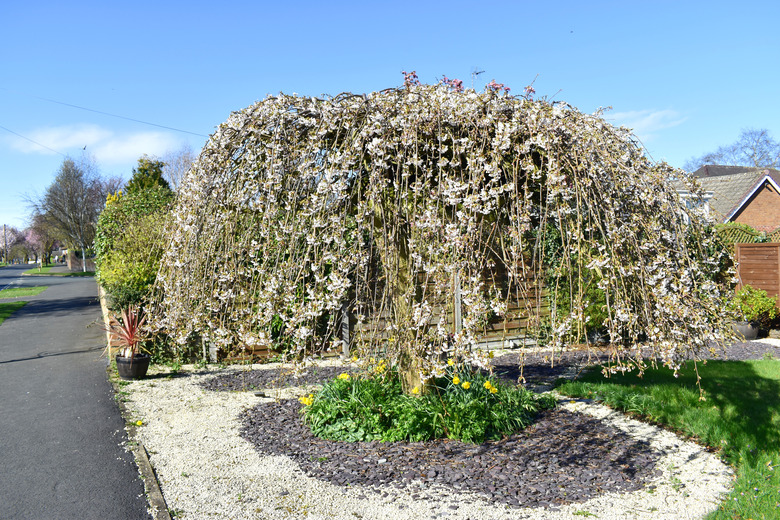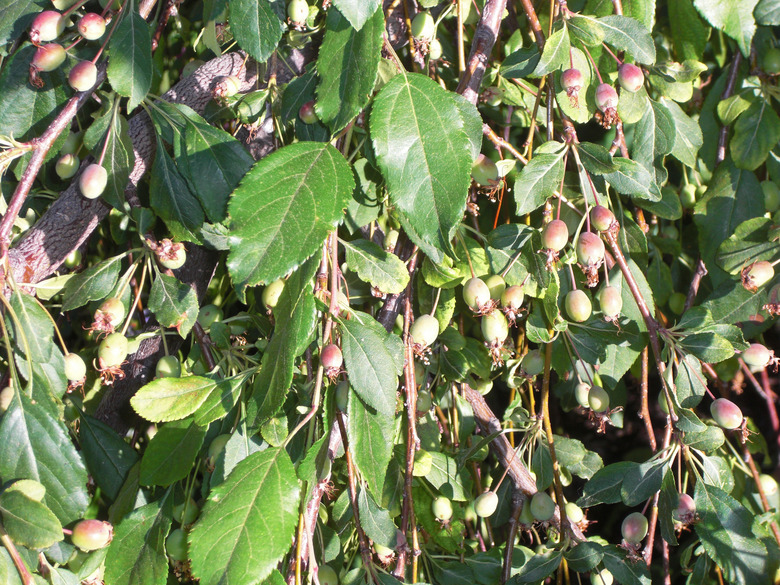Ornamental Weeping Dwarf Trees
Gardeners looking for dwarf ornamental trees with a weeping growth habit have a variety of cultivars to choose from—the trouble is narrowing down which you like best. Once a tree variety or cultivar catches your eye, determine if it will work in your garden and climate.
Most commonly available ornamental trees with dwarf and weeping traits can be divided into three main categories: evergreens, deciduous trees and flowering trees.
Evergreen Tree Varieties
Let's start off by looking at some evergreens.
Weeping White Pine
One ornamental, dwarf evergreen with a weeping growth habit is the weeping white pine (Pinus strobus 'Pendula,' USDA plant hardiness zones 3a to 8b). This tree reaches just 6 to 16 feet in height with cascading branches.
Weeping white pines are low maintenance and cold hardy, but they are susceptible to wind damage—so they must be planted in a sheltered location.
Weeping Norway Spruce
Another dwarf evergreen with a weeping, eye-catching growth habit is the weeping Norway spruce (Picea abies 'Pendula,' zones 3 to 7), which is another cold-tolerant tree. It reaches a height of 4 to 15 feet with dramatic, drooping branches covered in a dense carpet of bright green needles.
Weeping Variegated Boxwood
Weeping variegated boxwood (Buxus sempervirens 'Aurea-pendula,' zones 6 and warmer) is a broadleaf evergreen tree that is showy, small and branches with a draping habit. The foliage is a variegated creamy white and green, making this cultivar quite ornamental.
Weeping Blue Atlas Cedar
Despite its small size, the weeping blue Atlas cedar (Cedrus atlantica 'Glauca Pendula,' zones 6a to 8b) is one of the most dramatic weeping ornamental trees grown in gardens. It reaches between 3 and 12 feet in height with pendulous, rope-like branches that are covered in bluish-green needles year-round.
Although it is deer resistant, this tree needs shelter from strong winds that will break its delicate branches.
Deciduous Tree Varieties
Now let's look at some deciduous varieties of weeping trees, that is, ones that shed their leaves every year.
Young's Weeping Birch Tree
Young's Weeping birch tree (Betula pendula 'Youngii,' zones 2 to 7) is a leafy ornamental tree with a weeping habit reaching a mature height of 8 to 10 feet. Its dramatic weeping look is only part of its ornamental appeal; it also provides an autumn display of brilliant, golden yellow leaves.
Tip
Young's Weeping birch grows best in full sun but benefits from partial shade in the afternoon at the warmer end of its growing range.
Weeping Purple Beech
The weeping purple beech (Fagus sylvatica 'Purpurea Pendula,' zones 4 to 7) has a dwarf habit that tops out at 5 to 12 feet, as well as showy purple foliage along its weeping branches. The foliage starts purple and matures to a greenish-purple color in summer before turning copper in autumn months.
Red Dragon Japanese Maple
Japanese maple trees such as Red Dragon (Acer palmatum 'Red Dragon') are a good choice if you are looking for a small tree with strong ornamental traits and a weeping form. These showy trees make a brilliant focal point for small gardens in USDA zones 5 to 8, where they will reach a height of 7 to 8 feet. The segmented, lacy leaves have a burgundy color that turns bright red in autumn.
Chaparral Weeping Mulberry
Chaparral weeping mulberry (Morus alba 'Chaparral') is a dwarf, weeping cultivar best grown in USDA zones 4 to 8. Its small size and pendulous branches give it strong ornamental appeal, although it lacks the dramatic autumn color associated with many ornamental deciduous trees.
Kilmarnock Dwarf Weeping Willow
No list of dwarf weeping ornamental trees is complete without the dwarf weeping willow cultivar Kilmarnock (Salix caprea 'Kilmarnock,' zones 4 to 7). This fast-growing willow tree reaches a height of just 6 feet.
Kilmarnock willows are actually pussywillows—so they produce small, fuzzy catkins that give the tree a silver sheen in spring.
Tip
Kilmarnock willows are also listed under the name Salix caprea 'Pendula'.
Flowering Tree Varieties
Now let's look at some flowering tree varieties.
Snow Fountains® Flowering Cherry
Several flowering tree varieties also provide a weeping, dwarf growth habit with ornamental flowers. Flowering cherry tree varieties such as Snow Fountains® (Prunus x 'Snofozam,' zones 4 to 8) are highly ornamental. Snow Fountains® reaches a mature height of 8 to 15 feet with dainty, fragrant white flowers that have a faint blush of pink at the center.
Pink Cascade® Flowering Cherry
Another flowering, weeping cherry tree with a dwarf habit is Pink Cascade® (Prunus x 'NCPH1,' zones 5 to 7). It grows to between 10 and 12 feet in height with long, graceful branches that form fragrant, showy blossoms in spring.
It is a pink weeping cherry blossom tree with double-petaled flowers. Its green leaves remain glossy through the summer months and turn yellow and red in autumn.
Louisa Crabapple Tree
Louisa (Malus x 'Louisa,' zones 4 to 8) is a weeping crabapple variety with a semi-dwarf form. It reaches 12 to 15 feet with weeping branches that are smothered in pink flowers in early spring. Louisa crabapples grow best in full sun and moist, fast-draining soil.
Ruby Falls Weeping Redbud
Weeping redbud trees such as Ruby Falls (Cercis canadensis 'Ruby Falls,' zones 5a to 9b) stand out among other ornamental trees because both their flowers and foliage are are striking. The heart-shaped leaves start out burgundy in spring and fade to green by late summer before turning golden yellow in autumn.
References
- North Carolina State Extension: Cercis Canadensis 'Ruby Falls'
- North Carolina State Extension: Pinus Strobus 'Pendula'
- Missouri Botanical Garden: Picea Abies 'Pendula'
- Oregon State University Extension: Buxus Sempervirens 'Aurea-pendula'
- Monrovia: Young's Weeping Birch
- Missouri Botanical Garden: Fagus Sylvatica 'Purpurea Pendula'
- Monrovia: Red Dragon Japanese Maple
- Missouri Botanical Garden: Morus Alba 'Chaparral'
- Monrovia: Snow Fountains Weeping Cherry
- Missouri Botanical Garden: Malus 'Louisa'
- Bower and Branch: Pink Cascade Weeping Cherry
- Oregon State Department of Horticulture: Salix Caprea 'Kilmarnock'
- North Carolina Cooperative Extension Service: Cedrus atlantica 'Glauca Pendula'
